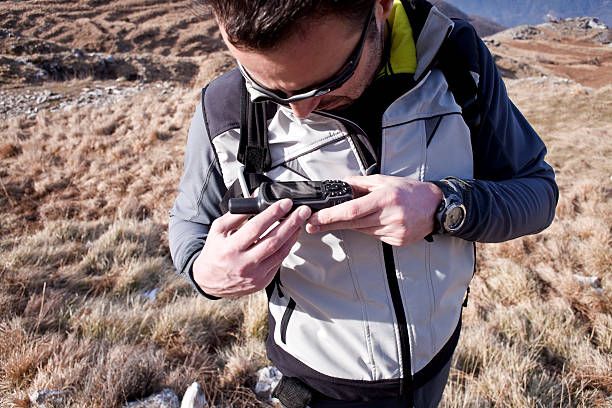
Send Inquiry
How Far Can I Communicate? Exploring Radio Range Details
Several factors influence radio range, including signal type, terrain, antenna quality, power output, and atmospheric conditions. Each of these variables plays a crucial role in determining the reach and reliability of radio communication.
This blog aims to delve into the intricacies of radio range, providing readers with a thorough understanding of the various factors at play. By exploring these details, readers can make informed decisions when selecting and utilizing radio communication equipment.
Understanding Radio Range Variables
Signal Type: Unveiling the VHF vs. UHF Debate
The frequency band used by a radio signal significantly affects its propagation characteristics. Very High Frequency (VHF) signals travel farther but struggle with obstacles, while Ultra High Frequency (UHF) signals have shorter ranges but better penetration capabilities. Understanding these differences is crucial for optimizing communication range.
Terrain and Obstructions: Navigating the Communication Landscape
The surrounding environment plays a vital role in determining radio range. Hills, buildings, trees, and other obstacles can obstruct or deflect radio signals, limiting their reach. By considering terrain features, users can anticipate potential communication challenges and strategize accordingly.
Antenna Importance: Elevating Communication Reach
Antennas act as the gateway for radio signals, converting electrical energy into electromagnetic waves and vice versa. The type, height, and quality of an antenna significantly impact communication range. By optimizing antenna configuration, users can extend their communication reach and enhance signal clarity.
Power (Wattage): Empowering Signal Strength
The power output of a radio, measured in watts, directly influences signal strength and range. While higher wattage radios generally offer greater reach, other factors such as antenna quality and environmental conditions also play a crucial role. Understanding the interplay between power and other variables is essential for maximizing communication effectiveness.
Atmospheric Conditions: Navigating Through Weather Challenges
Weather conditions, such as rain, snow, and fog, can affect radio transmission by absorbing or scattering radio waves. While atmospheric effects typically have a minor impact on communication range, they can still degrade signal quality under adverse conditions. Awareness of these factors allows users to adapt their communication strategies accordingly.
Delving Deeper into Key Factors
Signal Type: Navigating Frequency Bands
Frequency bands dictate how radio signals propagate through the air. Understanding the characteristics of different bands, such as VHF and UHF, is essential for optimizing signal reach and reliability. By selecting the appropriate frequency band for specific communication scenarios, users can enhance their overall effectiveness.
Terrain and Obstructions: Overcoming Communication Hurdles
The landscape surrounding radio communication points significantly impacts signal transmission. Analyzing terrain features and potential obstacles allows users to anticipate and mitigate communication challenges. By strategizing to minimize signal blockages and reflections, users can optimize line-of-sight communication and improve overall reliability.
Antenna Height and Quality: Elevating Communication Reach
Antenna configuration plays a crucial role in extending communication range. By positioning antennas at optimal heights and investing in high-quality equipment, users can enhance signal propagation and overcome obstacles. Understanding the principles of antenna optimization empowers users to maximize their communication effectiveness in diverse environments.
Power (Wattage): Empowering Signal Strength
The power output of a radio directly influences its signal strength and reach. By comprehending the relationship between power output and communication range, users can select appropriate equipment for their needs. Additionally, optimizing power settings based on specific communication scenarios allows for efficient resource utilization and enhanced performance.
Atmospheric Conditions: Adapting to Environmental Variables
Weather conditions can impact radio performance by affecting signal propagation and clarity. By monitoring weather forecasts and understanding how atmospheric conditions influence radio transmission, users can adapt their communication strategies accordingly. By proactively addressing weather-related challenges, users can maintain reliable communication channels in diverse environments.
Practical Tips for Extending Radio Range
Utilizing Monitor Function for Signal Optimization
Many radios feature a monitor function that allows users to listen for weak signals. By periodically monitoring the signal quality, users can identify potential communication challenges and adjust settings as needed to optimize performance.
Increasing Height for Improved Line-of-Sight
Elevating the position of radios can significantly enhance line-of-sight communication. Whether by standing on higher ground or utilizing elevated structures, such as hills or buildings, users can extend their communication range and minimize signal obstructions.
Leveraging GMRS Channels for Enhanced Performance
GMRS (General Mobile Radio Service) channels offer higher power output compared to FRS (Family Radio Service) channels. By utilizing GMRS channels where available, users can benefit from increased signal strength and extended communication range, especially in challenging environments.
Optimizing Antenna Configuration for Maximum Reach
Selecting the appropriate antenna type and positioning it correctly are critical for maximizing communication range. Users should opt for high-quality antennas and position them for optimal signal propagation, considering factors such as height and orientation.
Ensuring Battery Maintenance for Reliable Performance
Maintaining fully charged batteries is essential for consistent signal strength and reliable communication. Users should regularly check and recharge batteries to ensure uninterrupted operation, especially during critical communication scenarios. Additionally, carrying spare batteries or backup power sources can provide added peace of mind during extended use.
Conclusion
Understanding the intricacies of radio communication range is essential for maximizing the effectiveness of your equipment. By delving into the variables that influence signal propagation, users can optimize their communication strategies and overcome common challenges.
However, when it comes to selecting the right radio equipment, the Ruixue HF Ham Radio stands out as an excellent choice. With its robust build quality, advanced features, and reliable performance, Ruixue offers users a powerful tool for long-range communication. Whether you're a seasoned ham radio operator or a novice enthusiast, investing in a Ruixue HF Ham Radio can enhance your communication capabilities and open up new possibilities for exploration and connectivity. So, why wait? Take your communication to the next level with Ruixue today.


